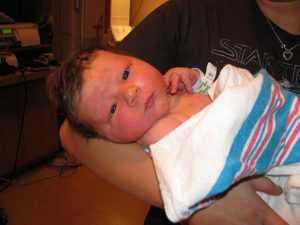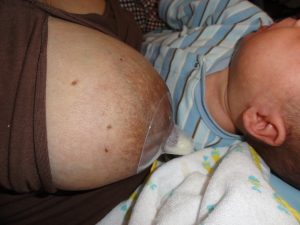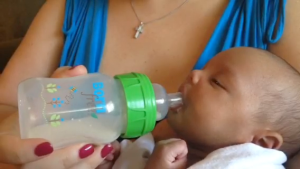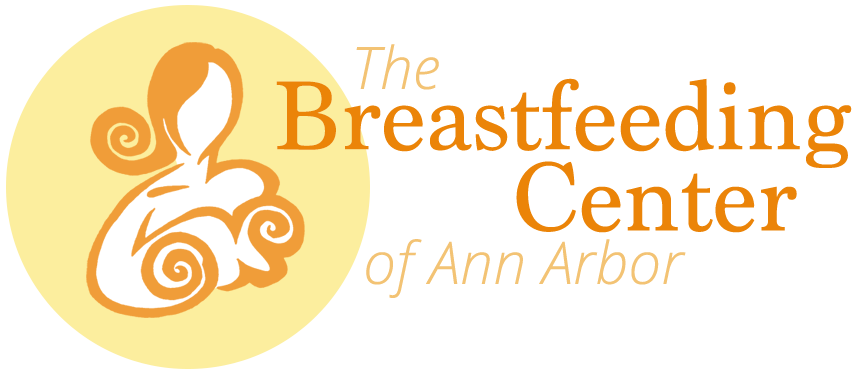Does it really?
Get your mind out of the gutter! We are talking about breastfeeding. And yes! Surprisingly, size does matter in many ways for breastfeeding. Here are five examples.
 1. Birth weight. A little baby makes a big difference! One of my girlfriends had a 6 pound baby the first time and an almost 9 pound baby the second time. She was astonished at the difference in her two, baby girls’, breastfeeding skills caused by their developmental differences. The first baby was early, and the next, past her due date.
1. Birth weight. A little baby makes a big difference! One of my girlfriends had a 6 pound baby the first time and an almost 9 pound baby the second time. She was astonished at the difference in her two, baby girls’, breastfeeding skills caused by their developmental differences. The first baby was early, and the next, past her due date.
2. You can also have what we jokingly call an “oral boobular disproportion”, ie, baby’s mouth is small and mama’s nipple is a bit on the larger side. They just don’t fit together very well in the beginning. Cure? Let the baby grow! In a few weeks time has worked its magic. I have a baby in my practice right now who still needs to grow a bit. He was transferring 0.8 oz a few days ago. He just transferred 1.8 oz! Huge difference but not quite there yet. In another week or so he will have taken off.

3. Also, size very much matters if you are using a nipple shield. Check out our new podcast on nipple shields. A nipple shield is a thin, silicon cover for the nipple and areola that provides more structure for the baby. It can be a very helpful tool. It can be exactly the wrong tool for you as well. We strongly suggest if you are using a nipple shield you should being watched over by an IBCLC.
Often hospitals only have tiny 16 mm shields. IMO, these are much too small for most mother’s nipples. You have to balance the size of the baby’s mouth with the size of mom’s nipples. If mother’s have been in the NICU with their babies, they will usually come in with this tiny shield. If it is too small, babies will suck like crazy but do not have breastmilk transfer. Other babies will refuse to do more than a few sucks because the breastmilk can’t flow. The nipple in the shield is being pinched so much the milk can’t get out! Make sure if you are using a shield you are getting professional help to make sure it is the best tool for you. An IBCLC can help. A nipple shield should be like training wheels for a bike, eventually you shouldn’t need them.
4. Most of my mothers are going back to work, or if nothing else, pump here and there so they can occasionally go out without the baby. One thing that many of my mothers don’t know is that the breast shield size, breast flange, the part that touches your breasts, is very important. Get more info on this here.
One of the most important factors when you are choosing your breast pump is whether your pump has sizing options for their shields. Different mothers need different sizes!
How do you know your shields might be too small or too large?
- It hurts when you pump!
- You are not getting the amount of pumped milk you expect.

5. Finally, the size of the bottle counts if you are bottle feeding. Many times mothers will say to me, “The childcare provider wants to know when we will be moving to a 6 or 8 oz bottle.” The answer is, NEVER. Babies only need to consume 25-28 oz per 24 hours for their whole first year. Really. For more info on this check out our web page Bottle Feeding Basics: How Much?
Size is important for breastfeeding! Make sure the tools you are using are the right ones so you can make the most out of your breastfeeding experience!
